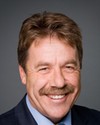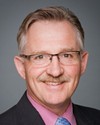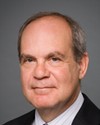Mr. Stoffer.
Evidence of meeting #4 for Fisheries and Oceans in the 39th Parliament, 1st Session. (The original version is on Parliament’s site, as are the minutes.) The winning word was seals.
Evidence of meeting #4 for Fisheries and Oceans in the 39th Parliament, 1st Session. (The original version is on Parliament’s site, as are the minutes.) The winning word was seals.
10:55 a.m.
NDP

Peter Stoffer NDP Sackville—Eastern Shore, NS
I just wanted to clarify for the witness that in 1999--and Mr. Nixon will verify this--the committee made a recommendation that the netting of seals, especially for the north shore of Quebec, be permitted. I can't see why this committee can't look at that again, if indeed Mr. Morrow is asking for that recommendation premise.
10:55 a.m.
Conservative

The Chair Conservative Gerald Keddy
I appreciate that.
Mr. Kamp and Mr. Manning, ten minutes, abiding your time.
10:55 a.m.
Conservative

Randy Kamp Conservative Pitt Meadows—Maple Ridge—Mission, BC
Thank you, Mr. Chair.
I just have a few questions for Mr. Morrow. Before I ask those, let me just indulge the committee and say that I did pass on from our last meeting some of the concerns the committee raised about the at-sea observer program to the minister. The decision to proceed on that is now under review. I thought you might like to know that.
Mr. Morrow, could you make it clear to me what you want DFO to do, or what you want to see? What would be the good outcome from this meeting? What do you want?
10:55 a.m.
Secretary Treasurer, Grey Seal Research and Development Society
I want the allocation that we have for 10,000 grey seals over two years, which will expire. We need that continued and perhaps increased if we're able to supply the market. I anticipate that we'll handle the problems that we have with harvesting the animals.
We need a scientific forum where we can discuss the grey seals in particular—not harp seals, but grey seals—and what their impact on the ecosystem and the commercial fishery is. The industry needs to participate in that. The eminent panel called a few industry people, but very few. It was mostly scientists and the scientific community, but no foreign scientists.
When I was in Iceland, the people basically laughed at what we're doing. We're allowing our industry to be destroyed. They would never do that over there. A scientist said that if they managed their fishery the way we do, they'd be living in mud huts.
In a review of the restricted areas, you have to realize that harp seals and grey seals are different. We don't harvest grey seals on ice. They have to be harvested on islands and coastlines. They're going to be harvested differently, so we need some help with that.
We're in the process of outfitting a boat for harvesting large animals. You can imagine the problems with shooting an 800-pound to 1,000-pound male. We have a couple of sealers or fishermen who do this, and then we have to get that animal on the boat off an island, we have to eviscerate it, and we have to put it in cold storage. It's going to take a special configuration of a boat for that harvest.
We need the province and DFO to work with the industry. This meat thing is a big opportunity for us. I was told that because of avian flu in China, they are looking for other forms of meat protein. The possibility is there. We could do 20 to 100 containers, and that's times 40,000 pounds of meat.
Finally, in the management of the grey seals, we need a target level for the population that we're trying to attain. I think it's about 50% of the population level that we have now. Over five years, we'd like to see the population reduced by 50% so that the impact on the ecosystem, the commercial fish stocks, and our commercial fishery would be less severe.
11 a.m.
Conservative

Randy Kamp Conservative Pitt Meadows—Maple Ridge—Mission, BC
It's my understanding that you haven't requested an extension or an increase to your allocation. Is that true or not?
11 a.m.
Secretary Treasurer, Grey Seal Research and Development Society
That's true. We're meeting with DFO in the Maritimes region in another week.
11 a.m.
Conservative
11 a.m.
Conservative

Randy Kamp Conservative Pitt Meadows—Maple Ridge—Mission, BC
In the potential biological review, they say that the hunt can only sustain an annual harvest of 2,100 grey seals in the Gulf of St. Lawrence and 8,300 in the Scotian Shelf. Do you agree with that?
11 a.m.
Secretary Treasurer, Grey Seal Research and Development Society
Absolutely not. If the goal of DFO is to have the herd expand, then that's a good harvest level. If the goal of DFO is to hold the herd at the level it is now, it's questionable. But at that level of harvest, as I said, 50,000 pups were born on Sable Island alone. If you harvest 10,000, you're not cutting into the population growth.
11 a.m.
Conservative
11 a.m.
Secretary Treasurer, Grey Seal Research and Development Society
I think that we need to have commercial markets. I don't think the Canadian population nor the government have the stomach for a cull, although in other countries they do cull the animals, but we need to build the markets for meat and pelts. We can do that.
I think we need to have an annual quota that is going to exceed by a considerable amount the number of pups born each year. It was 50,000 on Sable Island.
By the way, there are other pupping areas; there's Scatarie Island, and there's Hay Island. We're now finding some islands in western Nova Scotia as well.
There are 50,000 on Sable Island, and that's not counting the gulf. You have to get the annual TAC above 50,000. It's probably up around 100,000, if you're going to reduce the herd.
11 a.m.
Conservative
11 a.m.
Conservative

Randy Kamp Conservative Pitt Meadows—Maple Ridge—Mission, BC
John may have some questions here as well.
It always should give us pause, I suppose, if there's a witness who has a number quite different from the DFO scientists on what is a sustainable harvest. I just don't know how we resolve that.
I know you sincerely believe this is the right figure, but do you bring any other evidence to us to convince us that DFO scientists are wrong on this?
11 a.m.
Secretary Treasurer, Grey Seal Research and Development Society
A herd can be sustainable at numbers other than the number you have now. The number 350,000 is one number. You could have a herd, as the U.K. has, of 100,000, and you could sustain a herd at 100,000. The sustainable number depends on what your population target is.
Again I would say that we from the industry don't have PhDs, so when we talk to government people or to the media and a scientist talks to the government or the media people, I guess we're not received with the same credibility, but we see it every day. We see the spread.
I have processors in my association who tell me that they used to direct fishermen to certain areas to catch cod, haddock, flounder, and other groundfish species because they were clean from those areas and we could process them economically. Those areas don't exist any more. We're seeing that. The scientists don't see it.
11:05 a.m.
Conservative

Randy Kamp Conservative Pitt Meadows—Maple Ridge—Mission, BC
Finally, are you saying that you think you should hunt on Sable Island as well?
11:05 a.m.
Secretary Treasurer, Grey Seal Research and Development Society
Yes, I think with proper monitoring it can be done so that it's sensitive to the ecology of Sable Island. I also think--and there are a lot of people in the industry and among the general population who feel this way--we used to have a common seal herd out there that has now been driven off the island. There are islands--and I assume Sable Island would be the same--where bird populations are threatened by the expansion of the seal herd. Allowing one species to take over is not good ecoscience.
11:05 a.m.
Conservative

The Chair Conservative Gerald Keddy
I would like to thank our witness very much for coming.
I'd certainly like to recognize Clifford Hood, who was not here as a witness today but was at the panel.
I'd like to remind our committee members, just before Mr. Morrow leaves, that the steering committee will meet immediately following this meeting.
Mr. Morrow, a couple of questions came up, and I will be very brief.
For the benefit of the committee, what we're seeing off southwestern Nova Scotia with the increase in the grey seal population has been an expansion of their territory outside of where we would normally have seen them. By that I mean at 35 and 40 miles out into the ocean, where they're following the fishing boats.
Certainly you're familiar with the letter--and I think it has been presented to the committee--from John Levy, where he was out at the 35-mile line and the grey seals were simply taking the fish off his longline gear faster than he could haul it in. So we do have a serious problem.
My specific question is on the netting of seals. Mr. Stoffer brought it up. It seems to be an issue that DFO has not acted on. It's certainly a humane way of harvesting. It looks after the extreme difficulty of recovering the seal. It looks after the issue of trying to hunt them on the islands, where after the first shot they're all in the water and gone. It's certainly carried out in Norway; they net them in Norway. They net them in Iceland. They net them in other parts of the world, and it's a humane source of hunting. What seems to be the holdup on the netting process?
11:05 a.m.
Secretary Treasurer, Grey Seal Research and Development Society
I wish I knew the answer to that. DFO is the regulatory body, and a lot of the management of the seal hunt is based upon the harp seal. I was in St. John's in November for the seal forum, and we received the booklet of questions and issues from DFO. There was very little on grey seals and almost everything on harp seals. And that's a well-established hunt. But again, and I can't emphasize this enough, it's a different animal, a different place, and it's a different type of hunt. We're developing something here.
I've talked to a number of fishermen who have said that if we could set up some kind of a beach seine in shallow water--so if we go on an island and there are 12 adults and we shoot one, maybe we can take two or three more in the beach seine--that makes it an economical process. We're open to monitoring. We want to do this humanely. We're also open to the directions given to us constantly: utilize the entire animal. Let's make this a commercial industry.
11:05 a.m.
Conservative

The Chair Conservative Gerald Keddy
Certainly part of that would entail being able to fill your orders to China for containers of seal meat.
I would like to say, on behalf of the committee--
11:10 a.m.
Conservative
11:10 a.m.
Conservative